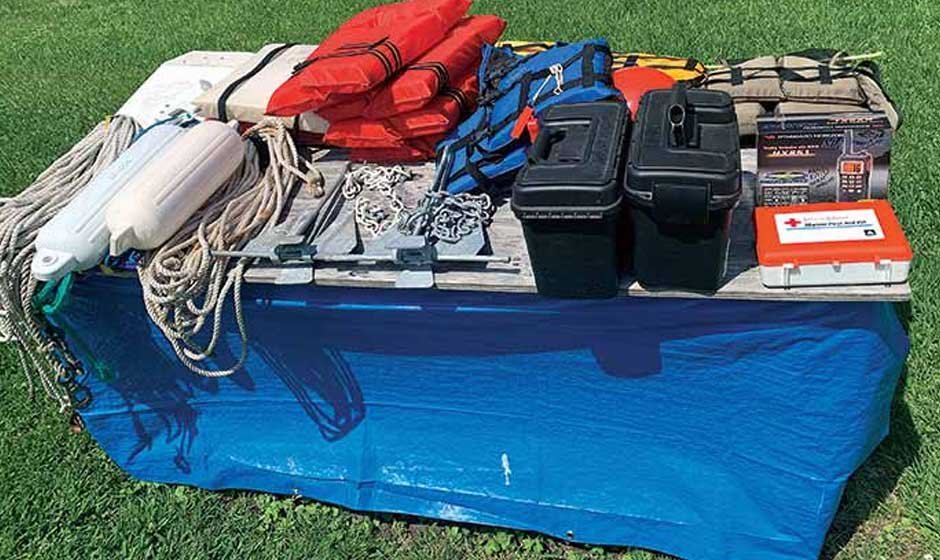The inability to stop the leaks is among the most frequent and annoying problems that boaters encounter, be it aboard a big cruiser, a small sailor, or even in the vicinity of a kayak launch dock. Leak prevention doesn’t have to be a product of experience or regular inspections; it should be carried using the right tools on board. The tools can be used to take quick action, guard the integrity of your vessel, and maintain safety of all people aboard. Topics of this article include critical elements of leak prevention which everyone who goes boating must have on board and the reason why each item is critical.
Importance of Sealants and Tapes
It is essential to carry various marine-grade sealants to seal up a leak. Such products are meant to withhold the continuous water, sun, and motion boats experience. Silicone, polyurethane, hybrid sealants are all good in their own ways and can be employed in the various locations of the boat. Right sealant enables you to seal hairline cracks or it will help you re-seal deck fittings before it becomes a source of problems. Knowledge gained through a Texas boater safety course can help boaters understand when and how to use these products effectively, making them a valuable part of onboard preparedness.
Waterproof tapes also belong in every boater’s toolkit. Leaks can be retreated by high-quality self-fusing silicone tape and heavy-duty butyl tape, which can be used temporarily until the time repairs can be done. These tapes are also life saviors when you find yourself in such an emergency, it will save you the much needed time to get back to the port in good conditions.
Benefits of Bilge Pumps and Leak Alarms
It is not just equipment but a sound bilge pump comes at peace of mind. A rightly sized bilge pump must be available in every boat to unexpectedly get the water into the boat. Manual bilge pumps can also be kept as backup in case of power failure. Testing and maintaining your bilge pump just about once a quarter will guarantee that when you need it the most it works.
Other than pumps, other leak detection systems such as FloLogic provide an extra protection layer. These gadgets are water flow monitors, and they are able to spot hidden leaks even when they are slow and would eventually result in substantial damage. A leak alarm system prevents the various problems by allowing the boater to respond immediately and they may avoid future costly repairs.
Value of Plugs, Clamps and Epoxy
The traditional insights on leak prevention are softwood plugs. In the event of a broken tapered screen, or through-hull fitting or a broken pipe, one may plug the through hole with a tapered plug to slow, or halt the incoming water. They are cheap, table-top heavy and can be stored close to every fitting so as to access them quickly.
It is also important to take stainless steel hose clamps and marine-grade epoxy. Leaking hoses or pipes can be clamped swiftly; and in case of an emergency, small holes or cracks can be patched with epoxy putty. Whether you’re docking at a busy marina or preparing your kayak launch dock for the day, having these tools on hand reduces risk and protects your investment.
Practical Uses for Buckets and Sponges
Sometimes simple tools are the most effective. On a boat bailing out the water by hand is done with a bucket, but runoff can be captured using it as the boat is repaired. It is also advisable that every vessel, regardless of size, should have a strong, lightweight bucket.
Water accumulation can also be checked by means of absorbent sponges and bilge pads. They also come in handy in small areas where pumps may not access. Elimination of standing water on a regular basis eliminates the possibility of corrosion, mold, and other issues related to leaks that may ensue over time.
Leak prevention does not entail taking action once something has already happened, it means it anticipates when something can happen. A boater who is well equipped should consider sealants, tapes, plugs, clamps, bilge pumps and leak alarms as his or her standard safety equipment. The ability to carry and keep these vital aids with them makes the boaters confident that they are equipped to deal with minor leakages before they turn catastrophic and compromise their safety or cause huge losses. It does not take a lot of time and effort which is worth the reward in every voyage by leaving your boat–and everything aboard–dry and safe.










